SEO Strategy: Strict Discipline or Everchanging Study
SEO Strategy: Strict Discipline or Everchanging Study
Many businesses see SEO as an important part of their marketing effort nowadays. Based on a report from Hubspot, Litmus, and Wistia, around 61% of marketers say improving SEO is their top inbound marketing priority.
Like everything that a business does, it is better if we have a strategy that gives a general direction for our SEO.
However, if we already have a functional SEO strategy in place, we might wonder whether we should update it regularly.
Do we need to change things? Or, as that famous line says, should we fix what isn’t broken? After all, our current SEO strategy may have already given us plenty of organic traffic with steady improvement.
To answer those questions, first of all, let’s take a look at what SEO strategy is and why we need it.
What is SEO Strategy?
SEO strategy is a basic set of principles and guidelines that mostly direct how we do things related to SEO.
As with every strategy, there will be tactics or action points that we implement based on it. The tactics or action points should reflect what we have already determined in our SEO strategy.
In an SEO strategy, there should also be several things that guide the approach of our SEO effort. This SEO effort includes keyword research, content writing and publication, link building, KPI, and the technical side of a website.
Why Do We Need an SEO Strategy?
SEO is a continuous process.
We shouldn’t stand still even if our current organic traffic is already satisfactory to us. That is because our competitors can outrank us at any moment, and there are probably keyword opportunities we haven’t explored yet.
Our SEO results can become stagnant or even regress unless we take action regularly. Thus, we should keep trying to improve the SEO variables we have on our website.
And this is why SEO strategy can be important.
SEO strategy acts as a general guideline that directs what we do for our website SEO. By staying true to the right SEO strategy, we can create consistently high-quality content that has more chances to rank high in search engines.
With the right SEO strategy in place, we can also improve our authority over time which can establish our presence in search engines even more. Moreover, we should be able to target the right niches that can be significantly impactful for our business objectives.
The right SEO strategy is useful as it can make us consistently produce and improve our results. This is why we should determine an appropriate strategy for our SEO effort.
Should We Update Our SEO Strategy Regularly?
To keep having the right SEO strategy in place, should we keep updating our SEO strategy? Even though our current SEO strategy already produces the results we want, do we need to do that?
To answer these questions, we need to see who eventually determines our SEO results. They are the search engines, particularly Google, since Google still dominates the search engine market these days.
Does it keep giving ranks by the same principles, or does it keep on changing them instead?
Well, it turns out that it keeps on changing them. It needs to constantly improve its search results for its users.
It does that by changing the search algorithm that it uses. Since Google establishes itself, there have been a lot of search algorithm updates until now.
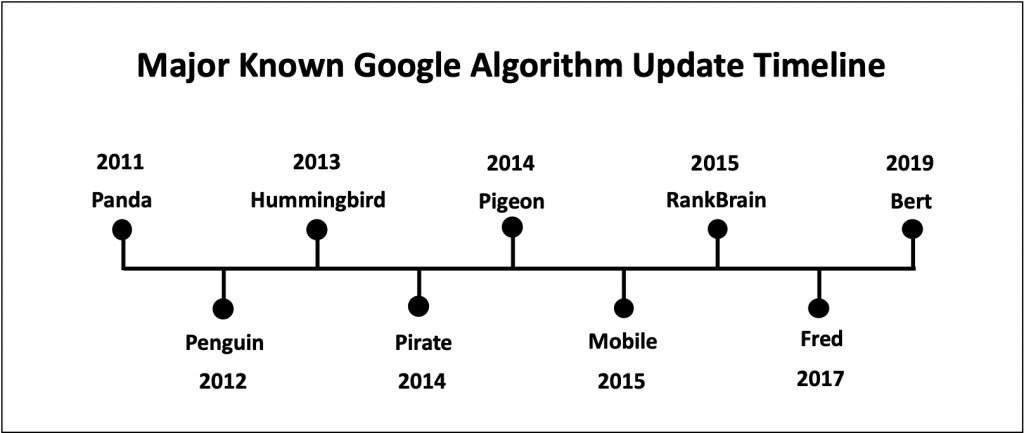
If the search algorithm is constantly changing, maybe we should do the same with our SEO strategy. A new way to rank from Google may need us to tweak how we do SEO so we can keep getting the top spots in its search results.
But why can Google algorithm updates make us need to change our SEO strategy, maybe even significantly? To understand the reason, let’s look at Google algorithm updates in a bit more detail.
The Evolution of Google Algorithm Update
Here are some major Google algorithm updates and what Google does in each of them.
- Panda (2011): ranks high-quality content higher and pushes poor and thin content rankings down
- Penguin (2012): penalizes websites that build authority through spam links and/or try to rank through content with keyword stuffing
- Hummingbird (2013): understands the context of search queries more to give better search results
- Pirate (2014): penalizes websites with pirated content
- Pigeon (2014): improves local search results by giving more weight to distance and parameters
- Mobile (2015): improves mobile-friendly pages rankings in mobile searches
- RankBrain (2015): learns and rewards the most relevant results according to user interaction with search results
- Fred (2017): penalizes websites with black-hat tactics related to overly aggressive monetization
- Bert (2019): understands the context of search queries better, especially long-tail queries
The changes that each Google algorithm update brings can influence our SEO strategy heavily.
Before Penguin, it might be fine (in the SEO point of view at least) to try to rank high using keyword stuffing or spam links gained from putting our website links everywhere. However, the companies that practice this kind of strategy need to change their approach after that update.
This is true, too, regarding the Fred update. Before, our SEO strategy might be to put as many conversion links as possible in our content. But since the update, we need to be more careful, so the links don’t make our ranks drop in Google.
Each major update can bring tweaks to our SEO strategy if we want our website to get optimum organic traffic. We need to evaluate the effectiveness of our SEO strategy if we think Google has made some changes that can impact our current ranks.
Failure Examples of Stagnant SEO Strategies
What about if we decide to ignore the updates and keep on moving with our outdated SEO strategy? Well, our company might fall into the problems that the following three companies have had.
- EzineArticles
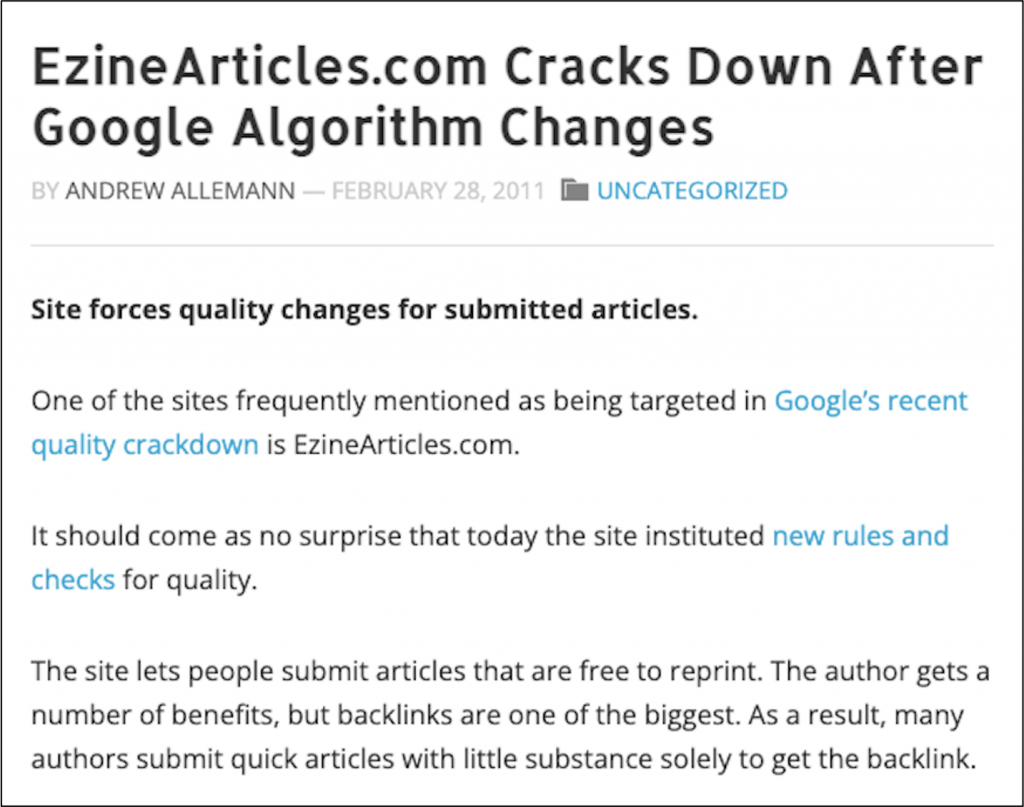
EzineArticles is a website that accepts article contributions from anyone in exchange for dofollow links.
Since EzineArticles has a high authority, it makes its dofollow links valuable, and a lot of people submit their articles to it. However, the article is often low quality as people only want its backlink, and EzineArticles doesn’t check the article that much.
EzineArticles was a success story back then since its articles often rank high on Google due to EzineArticles’ high authority. Then, the Panda update came and broke them.
The update, which punishes low-quality content, made EzineArticles lose 93% of its search visibility. Because their business model depends on the ads revenue they get from their traffic, the update hit them hard.
Moreover, Google also punished websites that get dofollow backlinks from EzineArticles. Thus, many people lost interest in submitting their articles to it.
- BMW
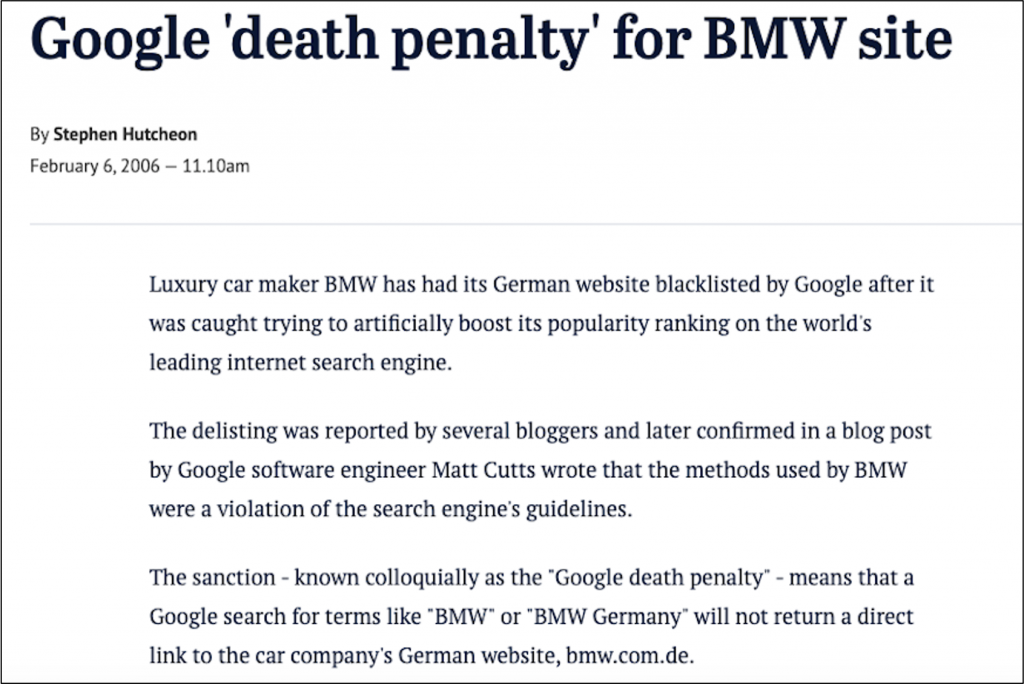
In 2006, BMW used doorway pages to manipulate the search results for the “used car” query. When people clicked on the search results, they were redirected to the regular BMW company page.
As Google fought spam articles intensely at that time, it penalized BMW when it knew the manipulative practice. Google removed BMW.de pages from its search results.
The penalty lasted three days until BMW removed the practice of its doorway pages.
- Washington Post
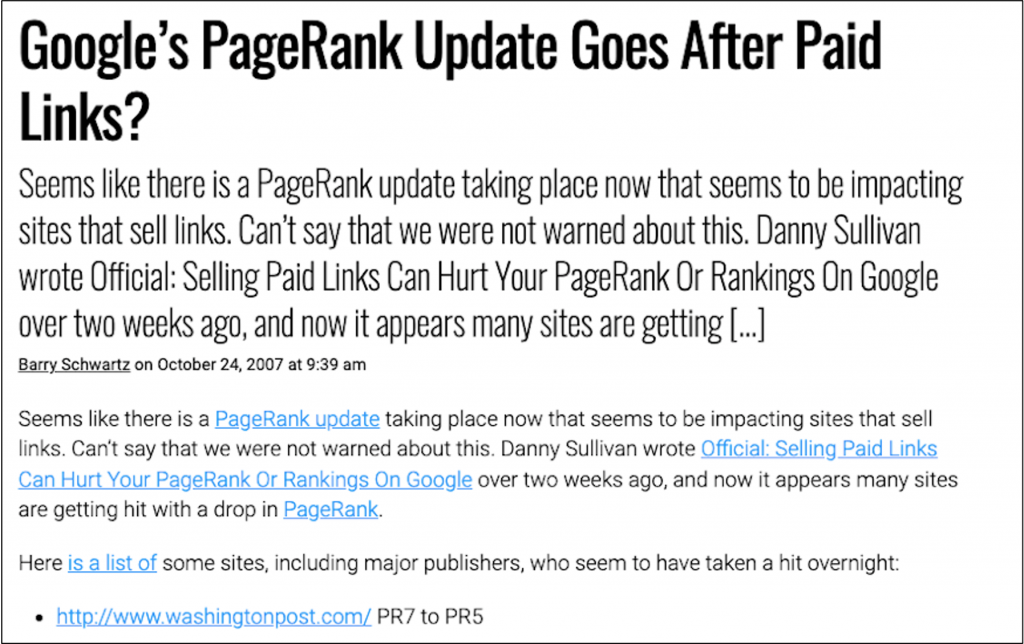
Back in 2007, Google penalized websites that sell links as a way to manipulate its search rankings. One of the most high-profile websites that got caught was the Washington Post.
Because of the penalty, the Washington Post page rank is lowered from PR7 to PR5. This caused Washington Post traffic to decrease considerably.
Besides Washington Post, some other popular websites also got lower page ranks because of their paid link practice. Among them are Forbes and Engadget.
Google keeps evolving its algorithm to give better search results for its users. As such, the SEO strategy that works currently might not work that well in the future.
What’s worse, our current SEO strategy might even penalize us and get us much lower ranks from Google, just as the three cases above have shown
Those failures remind us to make our SEO strategy adaptable. After all, it can be devastating if we lose much of our organic traffic overnight.
SEO in the Future
Google won’t stop updating the way it returns search results. It will keep on trying to give better answers to people’s search queries and anticipate different search needs in the future.
Thus, this also affects how SEO will play in the future too. The current trend makes it clear that we should always keep watch on what people want when they search for some information.
For example, one trend that sticks out currently is the rise of voice search. More than 100 million people use voice search in the US alone, and the number keeps growing every year. Looking at the trend, it may even dominate how people search the internet soon.
Another trend is the use of feature snippets and rich media to answer queries in Google. For example, Google seems to increasingly return rich media like this to the top spots for many how-to queries.
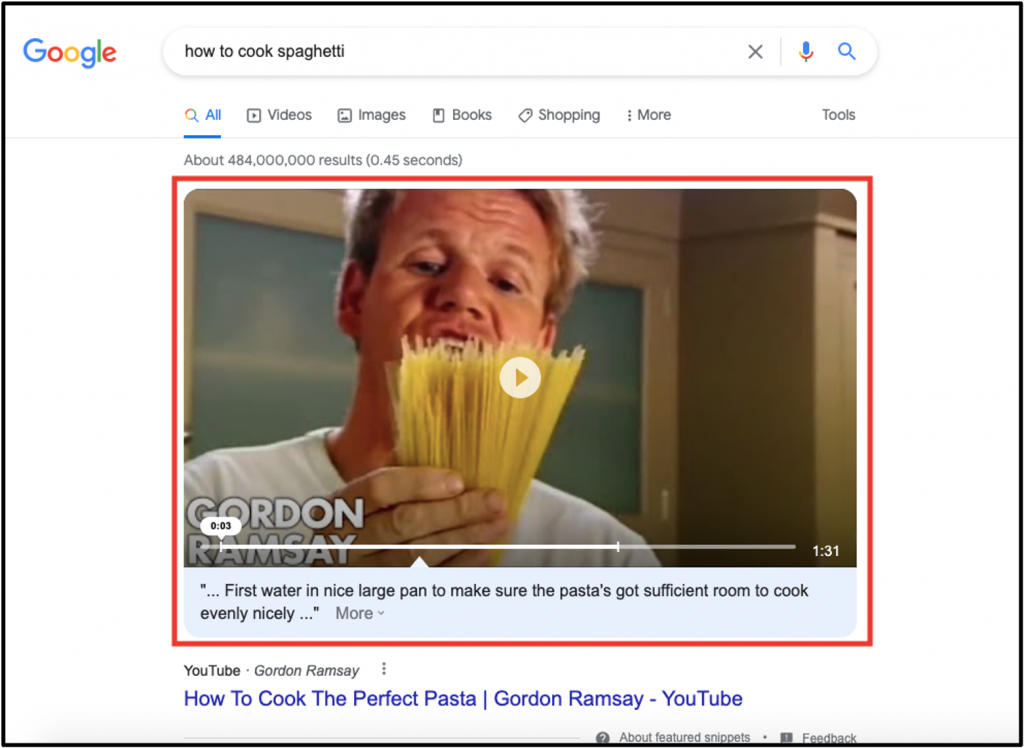
It can also return some search queries with the summary of a web page that seems best to answer those queries.
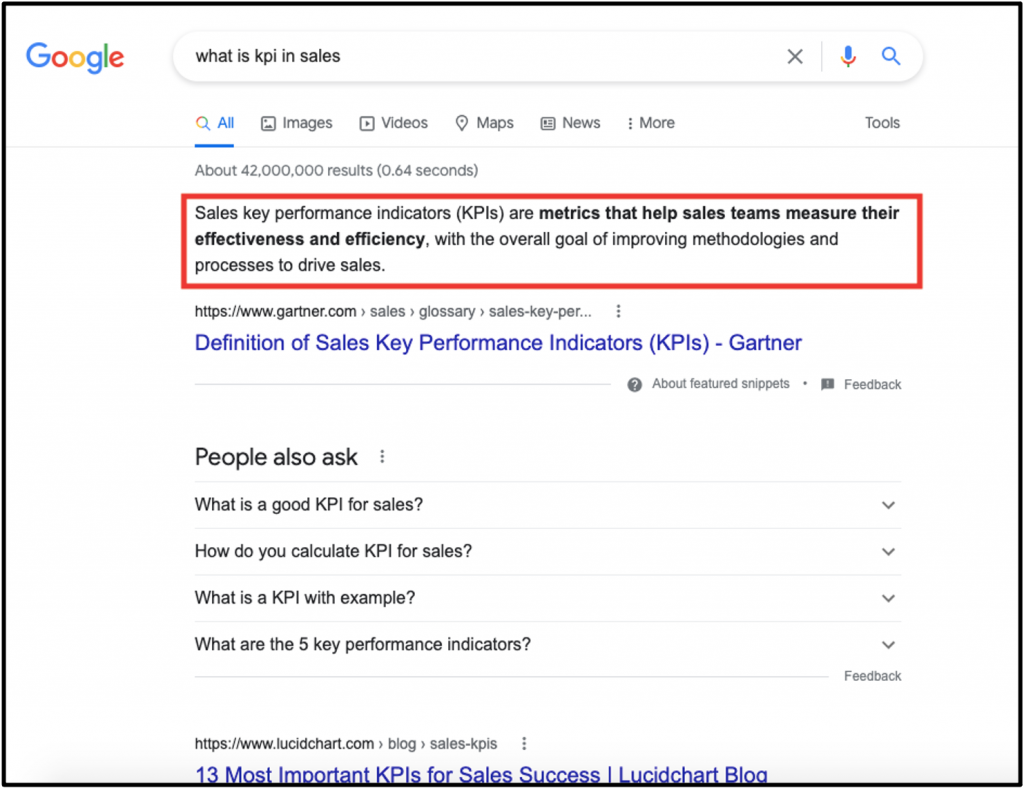
From just those two trends, our SEO strategy might need to adjust to get the best results. The key here is to keep understanding people’s search needs and come up with a way to publish content that serves them.
Search needs keep on evolving, and so does Google. If we want to constantly rank high in search results, our SEO strategy should keep on evolving.
Elements of a Good SEO Strategy
We should update our SEO strategy constantly so it can keep up with the latest search needs and search engines algorithm. But, what elements should we include in each of the SEO strategies we formulate?
When we talk about SEO strategy, these are the three aspects that we usually should cover.
- On-Page SEO
On-page SEO is all the SEO aspects related to the content of a website page. This includes the main content itself, meta title, meta description, and rich media we use in our content.
- Off-Page SEO
Off-page SEO is all the SEO aspects related to the factors from outside of our website that influence our SEO results. This aspect mainly concerns the backlinks we get from other websites that can show our authority. So, we should think about the backlinks acquisition in our SEO strategy regarding this aspect
- Technical SEO
Technical SEO is all the SEO aspects related to factors inside of our website but outside of our content that affects SEO results. This includes our website speed, SSL certificate, mobile friendliness, and broken links.
Whatever the SEO competition environment we are in, we usually need to think of these three aspects to formulate the best SEO strategy.
When we need to see whether we should update our SEO strategy, we can also take a look at those aspects.
We need to ask ourselves, “do we need to change how we create our content? Do we need to change the way we build backlinks? Is there something we should update regarding how my website works as a whole?”
By considering on-page, off-page, and technical SEO, we should get a much better view of the whole SEO strategy we should formulate.
How to Develop an SEO Strategy
If you want to formulate your SEO strategy, you can try to follow these steps.
- Determine your target audience profile
If you already have customer segmentation and targeting for your business, then you might want to align it with this.
In this step, you should figure out the segment you want to have your online presence on.
What is the demography? What is the geography aspect? What kind of information do they have an interest in?
By thinking about those things, you should be able to understand the target audience of your SEO much more. This is important as the basis for the next step.
- Determine your Niche
Since the Hummingbird update, Google seems to value topical authority higher. This is the authority that a website has related to a niche.
So, your website must determine what niche it wants to create content about and build authority on. You should base this on the target audience profile you have established.
Think of the people profile you want to target and select your niche accordingly. This should help you focus your SEO effort and build your online presence in the area that matters to you.
- Determine your current website authority
Your website authority determines what kind of keyword competition you can rank for currently.
A website’s authority level relates to the backlinks it has acquired. Even if you haven’t actively built backlinks for your website, it may have already had some backlinks it passively got.
You can understand your website authority better by measuring it through one of the popular SEO tools like Ahrefs, Moz, or Semrush. Compare your authority with your competitors to see where you are and what kinds of keywords you can target.
- Determine your list of keyword targets
Now that you’ve determined your chosen niche and your website authority, it’s time to list some keywords.
With your determined niche, you should have a much clearer idea of what keywords you want to create your content on.
For example, if your niche is professional development, you can target keywords like “how to make a PowerPoint presentation” or “digital marketing.” Or, if your niche is home improvement, you may want to target keywords like “best leather for sofa” or “how to remodel a house.”
You can find keyword ideas by thinking of the terms you think people will search in your niche.
Once you have gathered some interesting keywords, you can group them based on their search volume and keyword difficulty. You can get the search volume and keyword difficulty estimation from the SEO tool you use.
Utilize a spreadsheet tool like excel to help you list your keywords and all their variables. The table in your spreadsheet might become like this:

You may want to add other variables you think are important for your keywords’ measurement in the spreadsheet. You will use those variables with the search volume and keyword difficulty to determine the keywords you want to prioritize.
You can compare the keyword difficulty with the website authority you have currently. The ones you think you can rank high on should be marked.
After that, you can consider the search volume of the marked keywords. You can also sort your table on a multi-level based on the multiple keyword variables you have.
However, you may want to prioritize the keywords with the highest search volume that you can compete on.
The list you build will act as the place you can revisit over and over again when you want to create new content. As you grow your website authority, you may want to target keywords with a higher level of difficulty.
- Determine your content calendar
Once you know the keywords you want to target, you can create and fill in your content calendar. The calendar will help you plan the content you want to publish regularly.
Set the publication date of the content with the keywords you want to target beforehand. You may want to set the publication of content with your prioritized keywords earlier.
You might also want to fill in information about the content creation process tracker, PIC, outline, etc. The information should help you in creating and publishing the content easier.
- Determine your content creation and publication process
In this step, you should establish the guidelines you need to systemize your content creation and publication process.
When creating the guidelines, you may want to answer questions such as:
- How should the content assignment be made?
- What is the standard process flow of the content creation to ensure its quality?
- How long should it take to create, edit, and publish the content?
You may also want to create a guideline that can help to make your content consistent in its quality, style, and SEO friendliness.
Formulate until you have content process guidelines that are clear for everyone. You may need to evaluate and fine-tune them over time so your content can be better.
- Determine your link-building process
Besides thinking about content, another thing you should think about is your link-building process. This is important to strategize because you build your authority through the acquisition of backlinks to your website.
One thing for sure is you want your link-building process to follow Google guidelines. This is so your SEO results can be long-term.
Determine the tactics you want to prioritize to use to acquire your backlinks. Then, assign people or time to do them continuously so your website can build its authority over time.
Think also about the guidelines you need to standardize the link-building process. For example, you might want customized email templates according to the link-building tactics you use. You may also want to outsource certain parts of your link-building process.
As with the content process guidelines, make the link-building guidelines clear and try to evaluate and update them regularly.
- Determine your SEO KPIs
KPIs (Key Performance Indicators) are important because they inform you whether the SEO strategy and tactics you implement are working or not.
There are many variables related to SEO you can make your KPI from. Some of the most important ones are probably:
- Organic traffic
- Search impression
- Click-Through Rate (CTR)
- Average position
- Bounce rate
- Dwell time
- Conversion rate
Make sure you determine the right KPIs for your SEO so that you don’t measure your performance against the wrong metrics.
- Determine your evaluation process regularity
Once you know your KPIs, you should determine the regularity of your SEO evaluation process. Make it so you can fine-tune your SEO approach optimally over time.
You can evaluate your SEO strategy and tactics for your whole website and the performance of each of your content. Base the evaluation process on the KPIs you have determined before.
From the evaluation, you should know what things went wrong and what things you should fix from your SEO approach moving forward.
Besides the regular evaluation process, you might also want to do the evaluation whenever the situation needs it, such as when Google updates its algorithm significantly. This is so you can act fast to protect or improve your website traffic when you need to.
How Long Before an SEO Strategy Implementation Start to Give Results?
When we implement the SEO strategy we just formulated for our website, we might ask the ultimate SEO question: when will this start to show its results?
The answer is that no one knows for sure.
Well, actually, Google probably knows the answer. However, it won’t want to tell us specifically.
SEO deals with many variables. The competition, search algorithm, keyword search volume, trend, etc., are most likely different for each of us, and they can change constantly.
Thus, no one knows for sure whether the SEO strategy they implement will produce results in one week, one month, or even one year. The best estimate is it can probably take between six to twelve months.
However, one thing is for sure. If you want to have SEO success, you should treat it as a long-term investment.
SEO is never instant. Only by producing quality content and improving your website authority will you see significant long-term results.
So, as mentioned in the SEO strategy formulation steps, you should standardize your SEO process. Then, keep evaluating and fine-tuning it to gradually improve your search engine presence the right way.
That should help you to get what you want from SEO for your company.
Conclusion
So, is SEO strategy a strict discipline or an ever-changing study? Well, from what we discussed, the answer should be clear.
Search needs and the Google algorithm keep changing; thus, SEO strategy should, too, if it wants to keep producing excellent results.
Adapts your SEO strategy according to the latest search environment situation. Keep on the lookout for the changes by evaluating your SEO strategy regularly against your KPIs.
The result of an SEO strategy is never instant, so you should treat SEO as a long-term investment.
However, one thing that may never change is the need for high-quality content in SEO. Coupled with an excellent SEO strategy, it should give optimum organic traffic to your website.
The views included in this article are entirely the work and thoughts of the author, and may not always reflect the views and opinions of Regex SEO.

